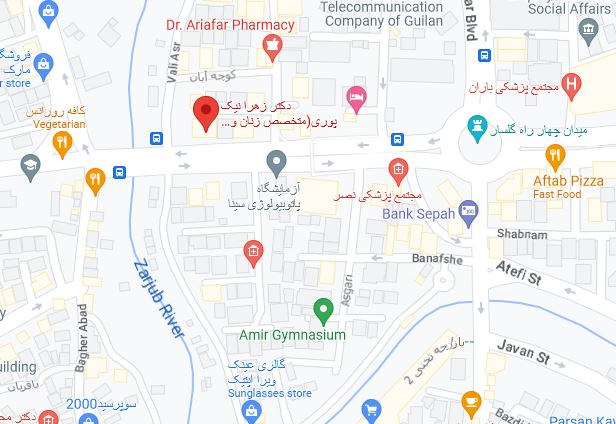An Epidemiological Overview of the Relationship Between Hormone Replacement Therapy and Breast Cancer
|
An Epidemiological Overview of the Relationship Between Hormone Replacement Therapy and Breast Cancer
Usha Salagame; Karen Canfell; Emily Banks
Authors and Disclosures
Posted: 05/26/2011; Expert Rev Endocrinol Metab. 2011;6(3):397-409. © 2011 Expert Reviews Ltd.
Abstract and Introduction
Abstract
Large-scale randomized clinical trials and observational studies have consistently found that use of hormone replacement therapy (HRT) increases the risk of breast cancer. More recently, ecological studies have shown correlations between dramatic reductions in use of HRT in many countries, and declines in the rates of breast cancer in older women. Meta-analyses of data from the trials and observational studies show that the increase in breast cancer risk is greater for combined estrogen–progestin therapies compared with estrogen alone; that for both types of preparation, breast cancer risk increases with duration of use; and that the risks decrease relatively quickly after cessation of use. For both estrogen-only and combined therapies, the risk of breast cancer is higher if therapy is initiated close to the time of the menopause, relative to the risks in women starting HRT later. Most drug regulatory authorities currently recommend that HRT be prescribed only to fully informed women who have moderate-to-severe menopausal symptoms, for the shortest duration possible; and it is recommended that the need for therapy be reviewed at least every 6–12 months . Introduction
Clinical practice and research must be based on the best possible evidence. Importantly, this includes quantitatively summarizing the cumulative worldwide findings from appropriate large-scale studies, rather than focusing on specific findings from individual studies. For breast cancer, where the disease event is unpredictable and other risk factors can be reasonably accounted for, data from observational studies are generally reliable[1] and should be considered together with the data from randomized controlled trials in quantitative summaries of the evidence. In the past 5 years, a number of ecological studies have documented declines in rates of breast cancer in various settings following large reductions in the use of HRT, which occurred after the initial findings of the WHI combined estrogen–progestin HRT trial were released in 2002. Most recently, longitudinal follow-up data from the WHI[16] and another major cohort study, the California Teachers Study,[17,18] have consolidated the evidence by demonstrating similar reductions in breast cancer rates in study women who had ceased use of HRT compared with those that were observed in the population-based ecological studies. Therefore, the evidence base for assessing breast cancer risk in relation to the use of HRT is now substantial, with several key aspects of this relationship being consistently observed when the evidence is properly synthesized, including the following: the use of HRT increases the risk of breast cancer; the increased breast cancer risk is greater for combined estrogen–progestin therapies than for estrogen-only therapy; the current evidence does not support differential breast cancer risks for different chemical formulations, doses and routes of HRT administration; breast cancer risk increases with increasing duration of use; the increased breast cancer risk diminishes markedly over time after ceasing use of HRT; the relative risk (RR) of breast cancer is increased in women initiating HRT close to the menopause compared with those starting therapy later; and HRT-associated breast cancer risk is modulated by obesity: thinner women demonstrate greater RRs of breast cancer . HRT Use Lowers the Sensitivity & Specificity of Mammographic Screening for Breast Cancer Randomized and observational study data show that women taking HRT are more likely than non-users to have breast cancers missed at mammographic screening (reduced sensitivity) and are more likely to have additional investigations, without a subsequent diagnosis of breast cancer (i.e., a false-positive screen and reduced specificity).[21,40–45] Hence, as well as increasing the risk of breast cancer occurring, HRT reduces the ability of breast cancer screening to both detect breast cancer and to efficiently exclude its presence. Use of HRT is Associated with a Greater Risk of Estrogen Receptor-positive Breast Cancer According to Surveillance, Epidemiology and End Results (SEER) program data, in the USA, in women 50–64 years of age, estrogen receptor-positive (ER+ve) tumors comprised 60% of all of invasive breast cancers between the years 1990–2001, prior to the publications of the findings from the WHI study.[107] A large body of evidence from observational studies exists to support a greater HRT-associated risk of ER+ve tumors than for ER-negative (ER-ve) breast tumors. The most recent updated analysis of Million Women Study data found that for estrogen-only HRT, the RR of ER+ve breast cancer compared with never-users was 1.76 (95% CI: 1.59–1.94) but it was 1.29 (95% CI: 1.06–1.56) for ER-ve tumors; the equivalent RRs for combined HRT were 3.10 (95% CI: 2.86–3.36) for ER+ve tumors and 1.37 (95% CI: 1.15–1.64) for ER-ve tumors. The ecological studies of declining breast cancer risk with declining HRT use have provided confirmatory evidence of the relationship between HRT and ER status. In the USA, declines in breast cancer incidence in women over 50 years of age were observed in ER+ve, but not in ER-ve tumors;[15]supporting results have been documented in other US-based studies.[51–53] Use of HRT is Associated with a Higher Risk of Dying from Breast Cancer The current evidence suggests that the RR of dying from breast cancer is higher in users of HRT. In the Million Women Study, a RR of 1.22 (95% CI: 1.00–1.48) for breast cancer mortality was estimated for women who were current versus never-users of HRT at cohort entry.[6] When the WHI combined estrogen–progestin HRT trial was stopped in 2002, women had been followed for an average of approximately 6 years. A recent analysis of 11-year follow-up from this trial found that the RR of dying from breast cancer was 1.96 (95%CI: 1.00–4.04) in women who had been originally randomized to combined HRT compared with those randomized to placebo; this study also found an increased risk of dying from all causes after a breast cancer diagnosis in women randomized to combined HRT (RR: 1.57; 95% CI: 1.01–2.48).[16] In both the Million Women Study and WHI follow-up study, the finding of increased breast cancer mortality is reinforced by the finding that breast cancers in HRT users are more likely to be node positive than those in nonusers.[8,16] The HRT-associated Breast Cancer Risk is Higher for Certain Tumor Types Lobular and ductal tumors account for 5–10% and 70–80% of invasive breast cancer cases, respectively.[46]A considerable body of evidence now exists suggesting that the HRT-associated risk of breast cancer is higher for lobular compared with ductal tumors.[7,47–50]Table 1 summarizes the results of the relevant studies. The higher RRs observed overall in users of combined estrogen–progestin versus estrogen alone HRT is present within the major histological subtypes of breast cancer examined. The evidence for differences in breast cancer risk for the other, less common, histological subtypes is more limited because most studies are not sufficiently powered to allow for precise estimates in these types. However, data from the Million Women Study and a related meta-analysis of the wider literature did assess specific risks in several tumor types, finding that the highest RR estimates were obtained for tubular cancers, followed by lobular, mixed ductal-lobular and ductal tumors. Current Evidence Suggests Greater Increases in Breast Cancer Risk Among Women Initiating HRT Use Closer to Menopause An area of recent speculation relates to the 'estrogen timing hypothesis',[31] where some commentators have suggested favorable effects for coronary heart disease[32] when HRT is commenced soon after menopause.[33] However, dedicated re-analyses of the WHI data, the data from which the 'timing hypothesis' originated, do not support this hypothesis for coronary heart disease.[5] On the whole, the risks outweighed benefits for combined hormone therapy, while there was a lack of net benefit from the use of estrogen-only therapy.[5,23,34,35] More importantly, the timing hypothesis was never considered to relate to breast cancer. In fact, for breast cancer, the evidence from WHI demonstrated, if anything, significantly higher RRs of breast cancer for women starting HRT close to the menopause, compared with those starting later.[5,16,35] Recent findings from the Million Women Study have confirmed and strengthened the finding that women starting HRT close to the time of the menopause have a greater elevation in their risk of breast cancer compared with those initiating therapy later. This pattern is observed for both estrogen-only and combined HRT; among women who had used HRT for either short or long durations (<5 years vs ≥5 years); and also in both lean and obese women. For current users of estrogen-only HRT, there was little or no increase in risk compared with never-users if use was initiated 5 years or more after the menopause (RR: 1.05; 95% CI: 0.89–1.24), but a significant elevation in risk if initiated within 5 years of the menopause (RR: 1.43; 95% CI: 1.35–1.51). A similar pattern was seen with use of estrogen–progestin HRT; for current versus never-users of combined estrogen–progestin HRT, the RR of breast cancer in women initiating HRT after 5 years was 1.53 (95% CI: 1.38–1.70) and 2.04 (95% CI: 1.95–2.14) in those starting HRT earlier. Extrapolating the WHI trial results directly to clinical practice has been met with some reservations.The average age of the women in the trials and high rates of nonadherence (~40%) have been cited as drawbacks of the trial. The new findings from the Million Women Study help to clarify the potential underlying reasons for differences in the magnitude of the estimated RR between the Million Women Study and the WHI. In addition to differences in duration of use and BMI profile of the populations involved, differences in the timing of initiation of HRT use in each study are an important variable that must be taken into consideration. In the WHI trials, most of the participants (90% in the estrogen-only trial and 83% in the combined therapy trial) were randomized when they were more than 5 years postmenopausal, although it should be noted that a substantial proportion of these had initiated therapy before the trial commenced.[5,35] The authors of the recent Million Women Study publication propose that this later timing of HRT initiation, in addition to the high average BMI of participants and poor adherence to therapy, is likely to have influenced the WHI breast cancer findings.[8] In particular, these differences between the WHI trials and other studies may explain the lack of a significant increase in the risk of breast cancer in the estrogen-only arm of the trial and the lower RRs of breast cancer in the combined HRT arm, compared with other studies. |


